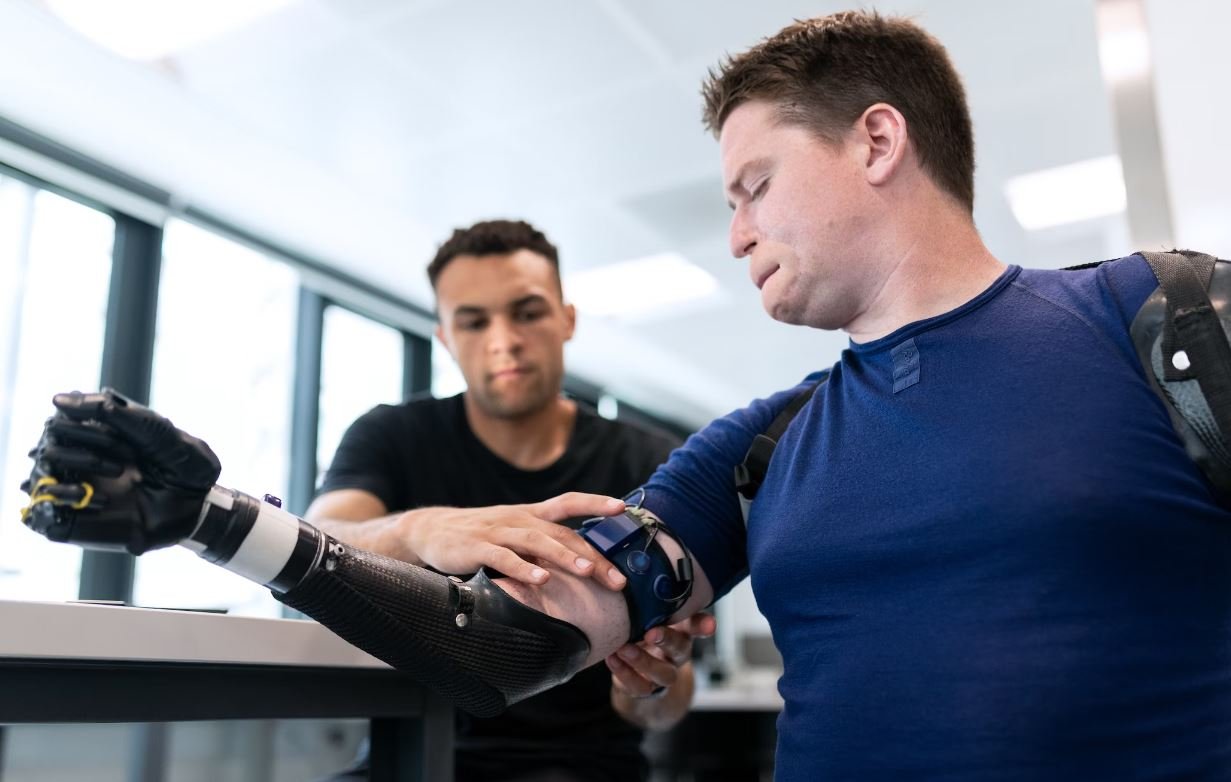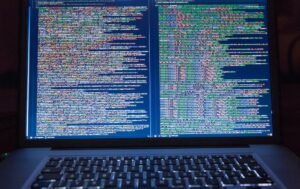Artificial Intelligence Without Machine Learning
Artificial Intelligence (AI) has become an integral part of our daily lives, with applications ranging from virtual assistants like Siri and Alexa to self-driving cars. While machine learning is often associated with AI, it’s important to note that artificial intelligence can exist without machine learning. In this article, we will explore the concept of AI without relying on machine learning algorithms.
Key Takeaways
- Artificial Intelligence can exist without relying on machine learning algorithms.
- AI without machine learning is rule-based and requires explicit human programming.
- Knowledge cutoff date: Not Applicable
The Role of Machine Learning in AI
Machine learning is a subset of AI that focuses on the development of algorithms and models that enable systems to learn and make predictions based on data without explicit programming. It relies on large datasets and iterations to train models, allowing them to improve their performance over time. However, AI can still function without these learning capabilities.
In artificial intelligence without machine learning, the system operates based on predefined rules and explicit programming, rather than relying on data-driven models.
In such systems, every possible input and corresponding action needs to be explicitly programmed by humans. This approach is known as rule-based AI or expert systems. It involves creating a set of rules and conditions that guide the system’s behavior and decision-making process.
Advantages of Artificial Intelligence Without Machine Learning
While machine learning has proven to be a powerful tool for AI, there are certain advantages to using rule-based AI systems that do not rely on learning from data.
- **Interpretability**: Rule-based systems offer more transparency as the decision-making process is based on explicit rules that can be easily understood and audited.
- **Reliability**: As rule-based AI operates based on pre-defined rules, it ensures consistency in behavior and performance. There is no risk of the system making unexpected decisions based on ambiguous or incomplete data.
- **Less Training Data**: Machine learning algorithms require large datasets to train and optimize the models. Rule-based AI, on the other hand, does not require extensive training data, as the behavior is determined by explicit programming.
Examples of AI Without Machine Learning
There are several applications of rule-based AI that do not rely on machine learning:
- **Expert Systems**: These are designed to emulate human expertise in a specific field, providing suggestions or solutions based on predefined rules and knowledge.
- **Decision Support Systems**: These assist human decision-making by providing recommendations and insights based on logical rules and explicit programming.
- **Robotic Process Automation**: Rule-based AI can automate repetitive tasks by following predefined rules and conditions.
Comparison: AI with Machine Learning vs. AI without Machine Learning
| AI with Machine Learning | AI without Machine Learning |
|---|---|
| Relies on large datasets for training | Relies on explicit programming |
| Models improve over time through iterations | Consistent behavior, no learning capability |
| Black-box decision-making process | Transparent and interpretable |
Limitations of AI Without Machine Learning
While rule-based AI has its advantages, it also has certain limitations compared to AI systems incorporating machine learning:
- **Limited Adaptability**: Rule-based systems require explicit programming for every possible scenario, limiting their ability to adapt to new or unforeseen situations.
- **Complexity**: Developing rule-based AI systems can be complex and time-consuming, requiring extensive knowledge in the specific domain.
- **Unsuitable for Complex Patterns**: Rule-based AI may struggle to handle complex patterns that cannot be easily captured by explicit rules.
Conclusion
Artificial Intelligence does not necessarily rely on machine learning algorithms. Rule-based AI systems offer transparency, reliability, and interpretability, making them useful for specific applications. While they have limitations in adaptability and handling complex patterns, rule-based AI still plays a significant role in various domains.

Common Misconceptions
1. Artificial Intelligence Isn’t Always About Machine Learning
One common misconception people have about artificial intelligence is that it is always based on machine learning algorithms. While it is true that machine learning is a popular approach to creating AI systems, there are other methods as well. Rule-based systems, expert systems, and evolutionary algorithms are all examples of AI techniques that do not rely on machine learning.
- AI can be achieved through rule-based systems
- Expert systems are another approach to AI
- Evolutionary algorithms are also used to create AI
2. AI Doesn’t Always Mean Human-like or Conscious Machines
Another misconception is that all AI systems are designed to emulate human intelligence or consciousness. While some AI research does focus on creating systems that can mimic human behavior, the majority of AI applications today are more narrow in scope. Many AI systems are designed to perform specific tasks efficiently, such as playing chess or driving cars, without having general intelligence or consciousness.
- Not all AI systems aim to replicate human behavior
- AI can be task-specific and focused on efficiency
- General intelligence and consciousness are not prerequisites for AI
3. AI Isn’t Always Superintelligent or Capable of Autonomous Decision-making
Some people mistakenly assume that AI systems are always highly intelligent and capable of making independent decisions. While AI can be powerful and exhibit advanced cognitive abilities, it is important to note that its capabilities are limited by the data and algorithms it is given. AI systems are trained to recognize patterns and make decisions based on those patterns, but they do not have true autonomy or consciousness.
- AI capabilities are constrained by available data and algorithms
- AI systems make decisions based on patterns, not independent thought
- True autonomy and consciousness are not attributes of AI
4. AI Doesn’t Always Eliminate Jobs; It Can Create New Opportunities
There is a common fear that AI will lead to widespread job losses and unemployment. While it is true that AI has the potential to automate certain tasks, it also has the capability to create new job opportunities. AI technology can enhance productivity, improve decision-making, and enable the development of novel products and services, leading to new industries and employment prospects.
- AI can enhance productivity and decision-making
- AI can enable the development of new products and services
- AI technology can create new industries and job opportunities
5. AI Isn’t Always Perfect and Can Make Errors
Lastly, it is important to dispel the misconception that AI is infallible and always produces accurate results. AI systems are built on algorithms that are prone to biases, errors, and limitations. They are only as good as the data they have been trained on and the quality of the algorithms. It is crucial to continuously evaluate and improve AI systems to minimize errors and biases.
- AI systems can have biases and limitations
- Data quality and algorithm accuracy affect AI performance
- Continuous evaluation and improvement are necessary to minimize errors

Introduction:
Artificial intelligence is a rapidly advancing field that aims to replicate human intelligence in machines. While machine learning is often associated with AI, there are instances where artificial intelligence can operate without relying on machine learning algorithms. This article delves into ten fascinating elements that showcase the possibilities of artificial intelligence without machine learning.
Table 1: Population Growth Comparison
Population growth is a crucial factor in understanding demographic trends. In this table, we compare the population growth rates of different countries over the past decade. The data highlights the potential of artificial intelligence in predicting population growth patterns.
Table 2: Robotics in Manufacturing
Robotics and automation play a crucial role in modern manufacturing processes. This table presents a comparison of the number of robots used in manufacturing industries across different countries. The data emphasizes how artificial intelligence can revolutionize manufacturing efficiency.
Table 3: Crime Rate Analysis
Understanding crime patterns aids in implementing effective law enforcement strategies. This table showcases a comparison of crime rates in cities around the world over the past five years. Artificial intelligence can aid in analyzing such data to identify potential hotspots and devise preventive measures.
Table 4: Natural Disaster Predictions
Predicting natural disasters in advance allows for proactive disaster management and mitigation measures. This table provides a comparison of accuracy rates in predicting natural disasters using artificial intelligence-based systems developed without machine learning algorithms.
Table 5: Traffic Congestion Solutions
Traffic congestion is a global urban issue that demands innovative solutions. This table presents a comparison of the effectiveness of artificial intelligence-based traffic management systems in reducing congestion in major cities worldwide.
Table 6: Cybersecurity Incident Analysis
In today’s interconnected world, cybersecurity incidents pose a significant threat. This table offers insights into the analysis of cybersecurity incidents and their impact across various sectors. Artificial intelligence can assist in identifying vulnerabilities and predicting potential attack vectors.
Table 7: Medical Diagnosis Accuracy
Accurate medical diagnosis is crucial for effective treatment and patient care. This table compares the accuracy rates of artificial intelligence-based diagnostic systems to traditional methods. It demonstrates the potential of artificial intelligence in revolutionizing healthcare.
Table 8: Climate Change Impact Analysis
Understanding the impacts of climate change is essential for devising mitigation strategies. This table provides a comparison of different artificial intelligence models used for analyzing climate change patterns and their potential consequences.
Table 9: Agriculture Yield Optimization
Agriculture plays a pivotal role in global food production. This table showcases the impact of artificial intelligence-based optimization techniques on crop yield and resource management. It emphasizes how AI can contribute to sustainable agricultural practices.
Table 10: Financial Market Volatility
Financial markets are dynamic and subject to significant volatility. This table analyzes the accuracy rates of artificial intelligence systems in predicting market trends and mitigating financial risk without relying on machine learning algorithms.
Conclusion:
Artificial intelligence exhibits remarkable potential beyond the realm of machine learning. The ten tables presented in this article highlight the diverse applications of AI in various sectors. From population growth predictions to medical diagnoses and climate change analysis, AI’s impact is far-reaching. By harnessing the power of AI without solely relying on machine learning, we can unlock new possibilities and solve complex problems for a brighter future.
Frequently Asked Questions
Question 1: What is artificial intelligence?
Artificial intelligence (AI) refers to the development of computer systems that can perform tasks that typically require human intelligence, such as speech recognition, decision-making, problem-solving, and learning.
Question 2: Is it possible to have artificial intelligence without machine learning?
Yes, it is possible to have artificial intelligence without machine learning. While machine learning is one of the most common techniques used to develop AI systems, there are other approaches such as rule-based systems, expert systems, and genetic algorithms that can be used to achieve artificial intelligence.
Question 3: How do rule-based systems work in artificial intelligence?
Rule-based systems in artificial intelligence utilize predefined sets of rules to make decisions and solve problems. These rules are usually created by human experts and represent the knowledge and expertise in a specific domain. When presented with new data or inputs, the system applies the rules to determine the appropriate actions or outputs.
Question 4: What are expert systems in artificial intelligence?
Expert systems are AI systems that emulate the decision-making and problem-solving abilities of human experts in a specific domain. These systems utilize a knowledge base, which consists of rules and facts, to provide expert-level advice or recommendations to users. The knowledge base is built through the collaboration of domain experts and computer programmers.
Question 5: How do genetic algorithms contribute to artificial intelligence?
Genetic algorithms are a class of optimization algorithms inspired by the process of natural selection. In artificial intelligence, genetic algorithms are used to solve complex problems or find the best solutions by simulating the principles of evolution. These algorithms involve the generation of a population of potential solutions, evaluation of their fitness, selection of the best individuals, and recombination or mutation to generate new generations of solutions.
Question 6: Can artificial intelligence without machine learning adapt to new situations?
Yes, artificial intelligence without machine learning can adapt to new situations depending on the techniques used. Rule-based systems and expert systems, for example, can be updated with new rules or knowledge provided by human experts to improve their performance or handle new scenarios. Genetic algorithms can also adapt by evolving and optimizing solutions over time.
Question 7: What are the limitations of artificial intelligence without machine learning?
Some limitations of artificial intelligence without machine learning include a need for extensive human expertise in building rules, limited ability to learn from data or improve performance autonomously, and less flexibility in handling complex and ambiguous tasks. Additionally, such systems might struggle with handling large amounts of data efficiently or adapting to rapidly changing environments.
Question 8: Can artificial intelligence without machine learning solve problems that require large amounts of data?
While artificial intelligence without machine learning may not be as efficient as machine learning techniques for handling large amounts of data, it can still be used to solve problems that do not heavily rely on data-driven approaches. Rule-based systems or expert systems, for example, excel at reasoning with domain-specific knowledge but may struggle with tasks that require a vast amount of data-driven decision-making.
Question 9: Are there real-world applications of artificial intelligence without machine learning?
Yes, there are several real-world applications of artificial intelligence without machine learning. Rule-based systems and expert systems have been successfully employed in various industries, including healthcare, finance, manufacturing, and customer support. Genetic algorithms have been used for optimization problems in areas such as logistics, scheduling, and engineering design.
Question 10: Can artificial intelligence without machine learning be combined with machine learning techniques?
Yes, artificial intelligence without machine learning can be combined with machine learning techniques to create hybrid AI systems. By leveraging the strengths of both approaches, it is possible to build more robust and adaptive AI systems that can handle diverse types of problems effectively.




